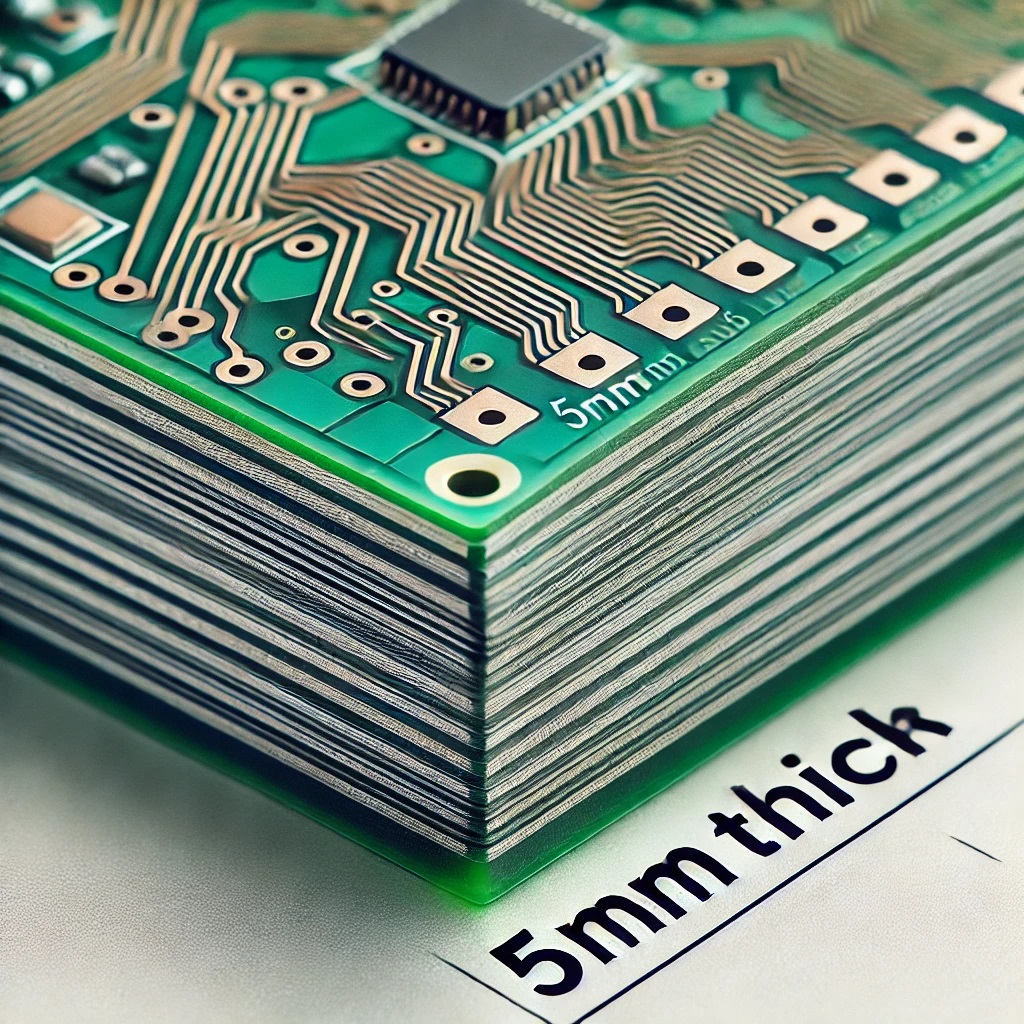What is the printed circuit board thickness standards?
PCB thickness is an important specification for circuit board construction. By choosing a standard PCB thickness, you can ensure that the final product will not be significantly altered when the circuit board is manufactured. However, if the manufacturer changes the PCB thickness during the manufacturing process, the price of the final product may increase significantly. This article discusses the importance of standard PCB thickness and how it relates to electronic device design.
PCB thickness is measured from the top laminate to the bottom and includes the thickness of the copper raw material. PCB thickness measurements do not include solder mask, screen printing or plating, and the thickness is a rough estimate of the total PCB thickness and is not always the same as the measured board thickness. The measured board thickness is usually 10% less than the calculated thickness, but the final thickness must account for the manufacturer's tolerance.
What factors need to be considered for custom PCB thickness?
Several factors need to be considered when designing a PCB, from size to thickness. Your CM may have common board sizes in stock, but if your PCB design requires a different board thickness, you may need to request a custom PCB. In addition, you may need to wait for some CMs to obtain unusual sizes due to limited equipment processing capabilities. Additionally, if you require a thicker board, you may have to pay more for it because it will take longer to process.
The first factor to consider is the PCB thickness. Ideally, your PCB should be between 0.008 inches and 0.240 inches. If your design requires a PCB thickness that is close to these standard values, you may have to adjust the components to match the standard values. In this case, you may have to pay more for a custom PCB design.
The materials, processes, and manufacturing tools used all have an impact on custom PCB thickness. For example, the thickness of the copper can vary. Thicker copper will result in a thicker board, which will increase the price. If you require a board with a larger copper thickness, you can order additional copper layers to accommodate the larger board. Additionally, custom PCB thickness may require the addition of additional copper.
While standard PCB thicknesses are widely available, custom thicknesses can be costly, reducing development time and quality. Therefore, it is crucial to determine if the thickness size you require is already on the market. Otherwise, you will have to pay for specialized materials and labor. Only choose a custom PCB thickness if you can afford the extra cost.

What if I want a custom thickness?
PCB manufacturers offer a variety of thickness options. While standard thickness is usually cheaper and faster to manufacture, it may not be as versatile or suitable for certain applications. Therefore, it is crucial to choose a supplier that can meet your requirements and provide expert advice. If you need to use a custom PCB thickness, the process will take longer.
Custom boards may be required for a variety of reasons. PCB thickness is determined by several factors, including design and manufacturing processes. The two main factors that affect PCB thickness are as follows:PCB substrate and number of PCB layers
Considerations for choosing printed circuit board thickness standard ?
There are several main considerations to consider when choosing a printed circuit board thickness standard.
1. Mechanical strength
Thinner PCB board thicknesses generally have lower mechanical strength, while relatively thicker boards are more robust. Therefore, in application scenarios where mechanical strength requirements are high, it is more appropriate to choose a thicker PCB board thickness.
2. Soldering performance
PCB board thickness also affects soldering performance. Thinner board thicknesses can provide better thermal conductivity, making it easier to dissipate heat during soldering. Thicker board thicknesses can provide better soldering strength. Therefore, in application scenarios involving welding, it is necessary to select the appropriate PCB board thickness according to the specific welding requirements.
3. Cost and space constraints
Thicker board thickness generally increases cost and takes up more space. In some application scenarios with cost and space constraints, a relatively thin PCB board thickness needs to be selected.
More details of PCB board thickness in PCB manufacturing
In addition to the above considerations, the printed circuit board thickness standard also involves some details in the PCB manufacturing process.
1. Selection of PCB materials
Choosing different PCB materials will affect the standard and range of PCB board thickness. For example, the thickness range of FR-4 material PCB boards is generally between 0.4mm and 6.0mm.
2. The thickness of laminates (Multi-Layer PCB)
For multi-layer PCBs, the board thickness is generally the sum of the thickness of each laminate. For example, for a 4-layer PCB, if the thickness of each laminate is 0.2mm, then the thickness of the entire PCB is 0.8mm.
3. Special needs
In some application scenarios with special needs, very thin or very thick PCB board thickness may be required. For example, the board thickness of some flexible PCBs (FlexPCB) can reach less than 0.1mm, while some high-power electronic devices may require thicker board thickness to ensure heat dissipation.
In summary, the printed circuit board thickness standard is a very important parameter in PCB manufacturing. When choosing the thickness of the PCB board, factors such as mechanical strength, welding performance, cost and space constraints need to be considered. At the same time, it is also necessary to select the appropriate printed circuit board thickness standard according to the specific application scenarios and needs. By understanding the relevant details of the PCB board thickness, PCB manufacturing and application can be better carried out. It is recommended to give priority to the standard PCB thickness will make your board faster and less costly. Of course, if you decide to choose a non-standard thickness, you should communicate with the manufacturer as soon as possible before starting the PCB design to ensure that the board factory's process can be manufactured.